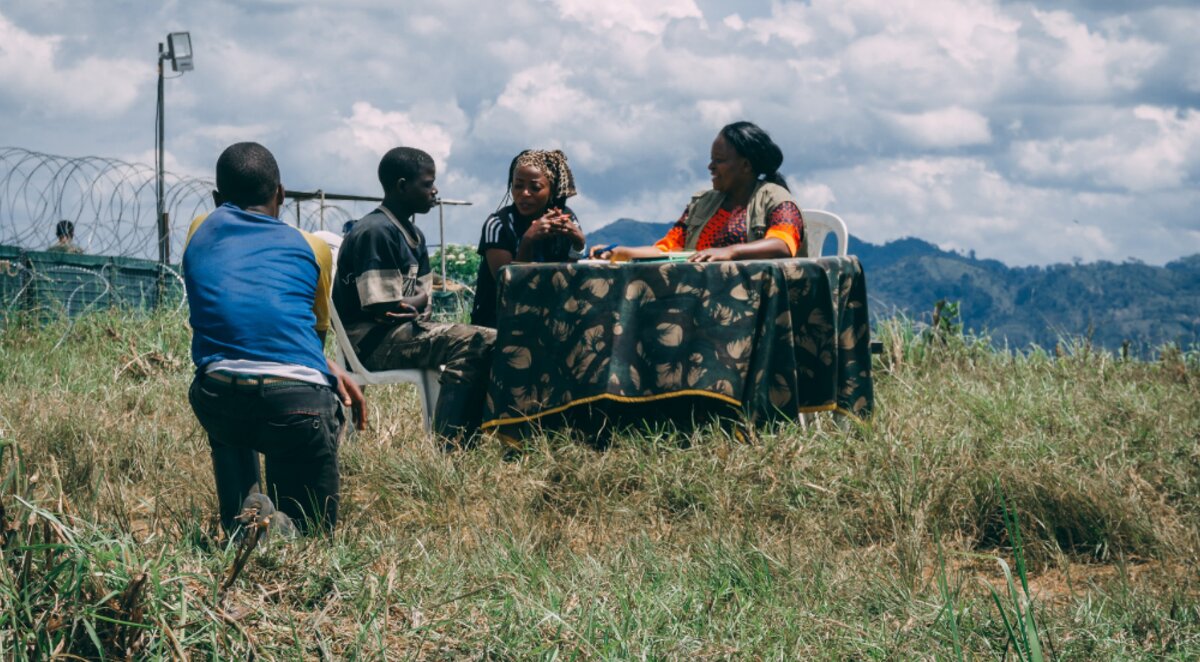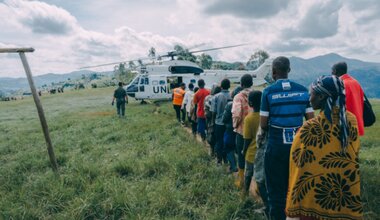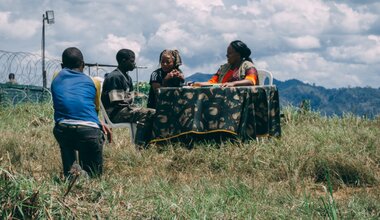Mandate and objectives
The Child Protection Section (CPS) leads on the Mission’s implementation of the Children and Armed Conflict (CAAC) mandate under relevant UN Security Council resolutions. Working closely with UNICEF, Child protection advisers deployed in the Mission’s field offices implement the monitoring and reporting mechanism (MRM) on the six grave violations perpetrated against children by parties to the conflict. The MRM on children also include a range of child protection prevention, verification, documentation, screening, and response activities. The six grave violations, as specified in the UNSC resolutions, include recruitment and use of children, sexual violence against children, killing and maiming of children, abduction of children, attacks on schools and hospitals, and denial of humanitarian access.
CPS, UNICEF and the Country Task Force on the Monitoring and Reporting Mechanism (CTFMR) analyze patterns and trends in MRM data on a quarterly and annual basis, submitting regular and specialized reports to the Office of the Special Representative of the Secretary-General (SRSG) for CAAC, subject to the approval of the cochairs of the CTFMR. CPS also provides reports to other stakeholders, including the DPO Child Protection Team in New York and the UN Security Council Working Group on Children and Armed Conflict. CPS reporting contributes to the JHRO monthly monitoring notes shared with the SRSG and the SG reports on the MONUSCO mandate implementation.
Alongside the UNICEF Representative, the DSRSG PO co-chairs the Country-Task Force on Monitoring and Reporting (CTFMR), which validates the annual findings of the MRM, engages with the Government at Kinshasa-level on children and armed conflict issues, and makes recommendations on advocacy points, contingency planning, funding for the reintegration of children, the listing or de-listing of parties to the conflict perpetrating grave violations against children in the annexes of the Secretary-General’s Annual Report on CAAC. CPS cooperates with JHRO, DDR, JSS, UNICEF and UN agencies for the Child DDR, Conflict related sexual violence and the fight against impunity.
CPS plays an advisory role to the Mission Senior Leadership on the child protection in transition. CPS plays the same advisory role to other Mission components on the children and armed conflict issues, particularly with the Force, the head of offices and the POC Unit. At field Office’ level, CPS staff are important members of the SMG-PP, which coordinates protection of civilians (POC) prevention and response and are frequent members of Joint Protection Teams (JPTs) and Joint Assessment Missions (JAMs). CPS also works closely with Force and UNPOL on their responsibilities to protect children during operations, e.g. working with the Force Gender and Child Protection Advisor on the Force Commander’s Directive on Child Protection by MONUSCO Force and a similar Directive from the Police Commissioner to UNPOL. Additionally, CPS conducts regular induction trainings on child protection to new Force contingents.
CPS engage with armed groups for the release and protection of children and provides referral services and transit care to children separated from armed groups. CPS provides capacity building service to security forces, focal points, and child protection NGOs.
Through its mainstreaming, CPS builds a common understanding that Child Protection is a cross-cutting issue. All Mission’s components – military and civilian – have a collective responsibility to timely share all information concerning children affected by parties to the conflict with the civilian child protection officers.
CPS’s mission is also to support the government in implementing the UN/Gov Action Plan, signed in October 2012, to prevent and combat the use and recruitment of children and other grave violations of children's rights committed by the Armed Forces and security services of the Democratic Republic of Congo. As part of the implementation of this Plan, Technical Working Groups on Children and Armed Conflict have been set up at national and provincial levels.

Activities
Child Protection Section conduct the following activities daily:
- Monitoring and reporting on grave violations against children,
- Mainstreaming through training and capacity building on the CAAC and the MRM
- Provision of strategic advice on child protection to internal and external partners
- Advocacy for the protection, wellbeing, and rights of affected children.
- Dialogue with parties to the conflict, to end violations against children.
- Liaison with UNICEF on the reintegration and child DDR
Reports and publications
The Child Protection Section (CPS) analyzes patterns and trends in MRM data on a quarterly and annual basis, submitting regular reports to the Office of the Special Representative of the Secretary-General (SRSG) for CAAC, subject to the approval of the DSRSG for Protection & Operations. CPS also provides reports to other stakeholders, including the DPO DPET’s Child Protection Unit and the UN Security Council Working Group on Children and Armed Conflict.
Please click on links below to download Reports and publications:
Children and armed conflict in the DRC |
Annual Report on Children and Armed Conflict |
Contact Child Protection Section
MONUSCO Child Protection Section HQ
Av. la Corniche
Quartier les Volcans
Commune de Goma
Goma, DR Congo
Mathieu Ndongo Koni is the Chief Child Protection Section, Email: koni@un.org
Section Email: monusco-s-childpro-general@un.org
Child Protection Section is under the DSRSG protection and operations Pilar. The section established its operational HQ in Goma Lava Site. The chief child protection supervised 28 staff including national and international officers, support staff and consultants based in the 3 main affected provinces: North Kivu, South Kivu and Ituri. CPS presence is visible in field offices and sub offices in Goma, Beni, Bunia, Bukavu, and Kinshasa.
Photos and Video from field
 UN
UN United Nations Peacekeeping
United Nations Peacekeeping





